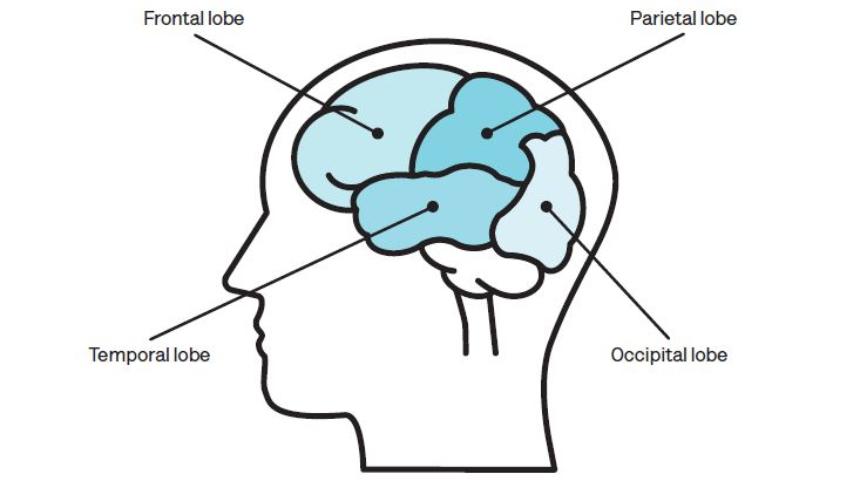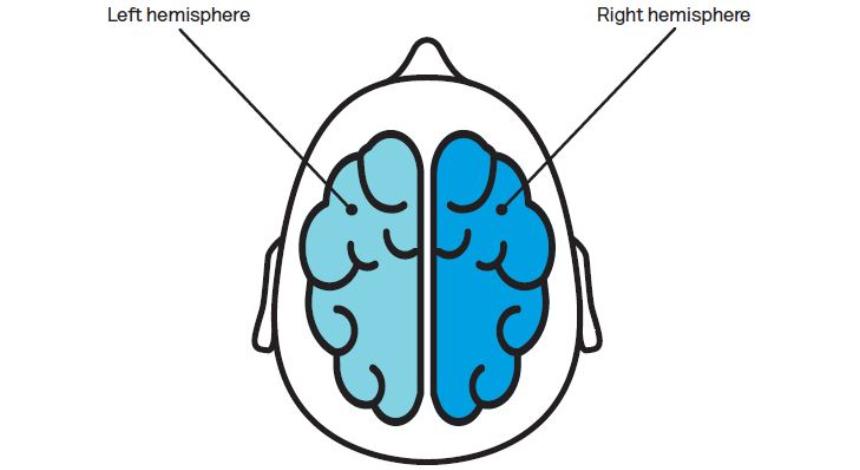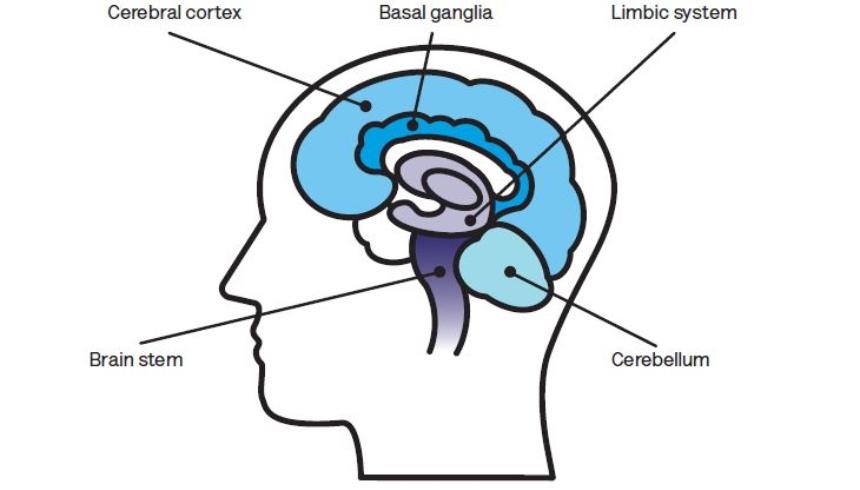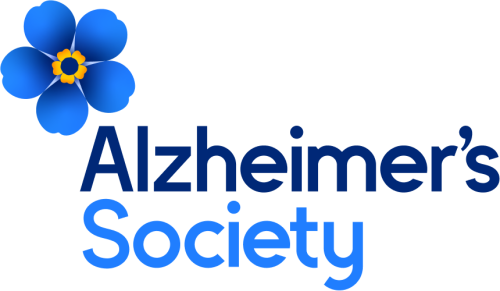Understanding parts of the brain
Learn about the parts of the brain and how dementia damages them, as well as about the symptoms the damage causes.
- Dementia and the brain
- You are here: Understanding parts of the brain
- Explanation of the functions of the brain
- Dementia symptoms and areas of the brain
Dementia and the brain
Dementia is caused when the brain is damaged by diseases, such as Alzheimer’s disease or a series of strokes. Alzheimer’s disease is the most common cause of dementia, but not the only one.
A person with dementia will experience symptoms depending on the parts of the brain that are damaged, and the disease that is causing the dementia.
The cerebral cortex
The cerebral cortex is a thin layer of cells covering the outside surface of the brain. It is responsible for:
- memory
- reasoning
- decision-making
- language
- social skills.
It controls actions such as moving around or talking, as well as processing sight, hearing, taste, smell, touch and pain.
The lobes of the brain
The cerebral cortex can be divided into four ‘lobes’ (regions). These are the:
- temporal lobes
- frontal lobes
- parietal lobes
- occipital lobes.

Illustration of the four lobes of the cerebral cortex
More details about the lobes of the brain
The hemispheres of the brain
The brain is divided into two hemispheres (halves), the left and right side. Each lobe has a left and right side. Each lobe does different things, but they work closely together.

Illustration of the two hemispheres of the brain
The sub-cortex
The sub-cortex is any part of the brain below the cerebral cortex. This region allows fast communication between the different parts of the brain.
It also contains some areas that are important for movement, thinking and emotion such as:
- the basal ganglia
- the limbic system
- the cerebellum
- the brainstem.

Illustration of the cerebral cortex and sub-cortex
More details about areas of the brain
- Page last reviewed:


The temporal lobes are on either side of the brain, nearest to the ears. Their main roles involve memory processing, hearing and language.
Both temporal lobes store general knowledge. General knowledge (known as semantic memory) is different from the types of memory that relate to day-to-day experiences. The left temporal lobe helps to understand language, and usually stores facts and the meanings of words. The right temporal lobe deals with visual information, such as recognising familiar objects and faces.
Within each temporal lobe is a region called the hippocampus, which processes memories to allow them to be stored and found when needed. Damage to the hippocampus makes it difficult to learn new things. The hippocampus also sends important information to be stored in other parts of the cerebral cortex. It is important for memory of events and experiences (episodic memory).
The temporal lobes also help to understand what is being heard. Damage to the temporal lobes, particularly to an area called the auditory cortex, can make it more difficult for the hippocampus to form memories of what has just been heard.
Alzheimer’s disease often starts in and around the hippocampus, before it spreads to other parts of the brain. This is why one of the first symptoms many people notice is memory loss.
The frontal lobes are at the front of the brain, behind the forehead. This part of the brain eventually becomes damaged in most types of dementia. They are where information is stored and processed, which allows a person to make rational decisions and judgements.
Frontotemporal dementia (FTD) is most closely linked to damage in the frontal lobes. Early symptoms of FTD can be changes in personality or behaviour. People may also experience difficulty with planning, organising and making decisions.
In other types of dementia, such as Alzheimer’s disease, dementia with Lewy bodies and vascular dementia, the frontal lobes tend to be damaged later on.
Damage to the frontal lobes can make it hard to pay attention for very long, switch between tasks or do more than one thing at a time.
A person with damaged frontal lobes may become easily distracted or easily lose focus, particularly if they are given too much information all at once.
The frontal lobes also control interest and motivation. As a result, damage to these parts of the brain may cause a person to become:
The frontal lobes also control how a person acts in social situations. They may stop a person from saying inappropriate things. Damage to this part of the brain means people with dementia may say things that are hurtful or rude without meaning to. This can be difficult for people supporting them.
Within the frontal lobes is the motor cortex. This deals with planning and movement by controlling muscles. Damage to the motor cortex happens very late in most types of dementia. Some people experience problems with movement in the early stages of dementia. This is normally caused by damage deeper in the brain and not the motor cortex.
The parietal lobes are located in the upper part of the back of the brain. In most people, the right-hand side helps them to understand the position of their bodies and objects in space. For example, it helps them bring a fork to their mouth when eating. The left parietal lobe allows a person to tell left from right, as well as to read, write and process numbers.
Damage to the parietal lobes is common in Alzheimer’s disease. It can lead to problems with performing gestures and skilled movements (apraxia) when the person is trying to do things like tie shoelaces or put on clothes. It can also make doing tasks that involve reading or writing much more difficult.
The occipital lobes are located at the back of the brain and mostly deal with visual information. This region processes visual information and makes sense of it, including recognising colours and shapes. The resulting information can then be passed on to other areas of the brain.
Damage to the occipital lobes eventually occurs in most types of dementia, although not generally during the early stages. However, in posterior cortical atrophy (PCA), visual problems can be among the first symptoms.
When the occipital lobes become damaged, a person may experience difficulty working out what they see in front of them. Severe difficulties with visual perception can also contribute to visual hallucinations.
As well as making visual information more difficult to understand, damage to the visual cortex can contribute to deteriorating eyesight.